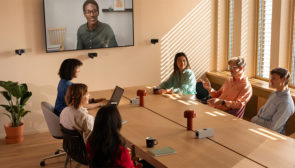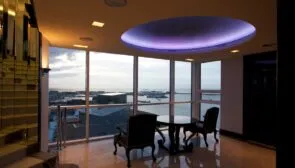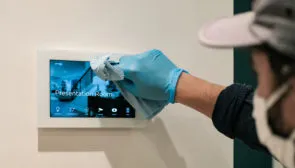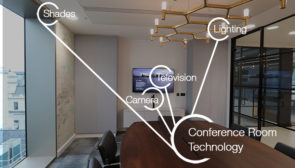A Guide to Conference Room Speakers, Microphones, and Audio
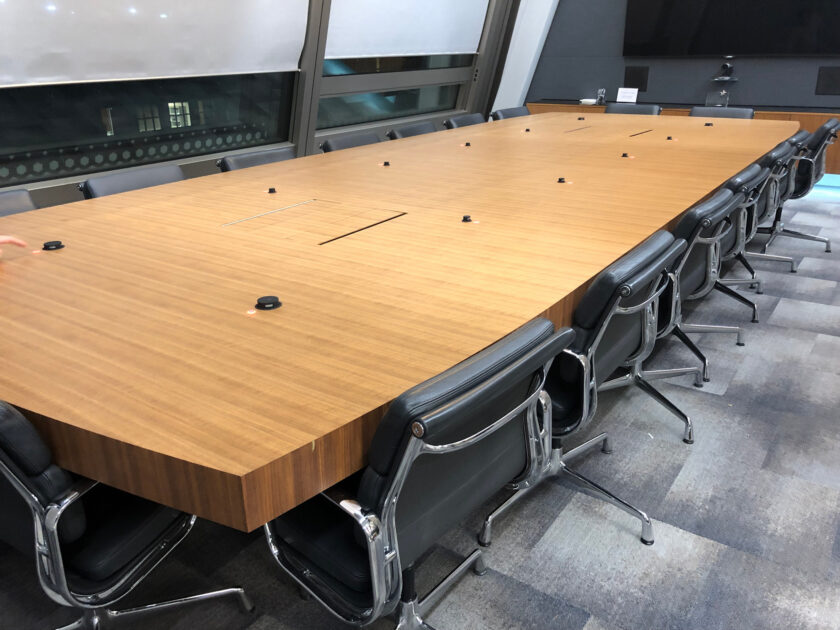
Conducting a conference call was once a hassle — even for a simple audio session. In the past, a typical conference call required bundles of wires sprawled across a table and a team of people huddled around a tabletop speakerphone. Half of the meeting was spent asking “Can you hear me now?” and “I’m sorry, can you repeat that?” Not a lot got done, and conference calls were the dreaded alternative to an in-person meeting.
Today’s organizations are adapting though. With many workers working from home or in hybrid environments, businesses understand the importance of a well-built communication hub. Due to social distancing, the idea of huddling around a single speakerphone has become many people’s idea of a nightmare. Spending half a meeting or more ensuring communication works is time people just don’t have. Now, more than ever, organizations understand the importance of conference room speakers and microphone solutions to keep pace with their growing and expanding operations. After all, they’re one of the essential elements of conference room technology that makes a successful space.
Setting yourself up for success
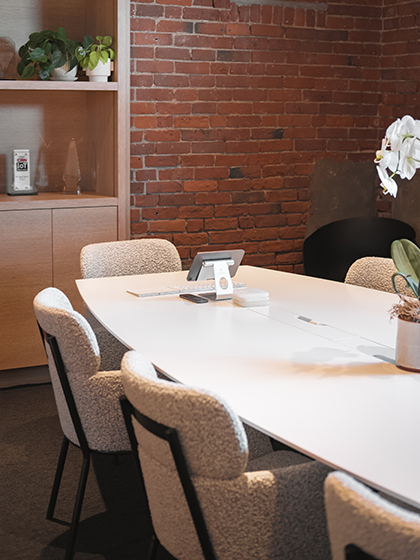
TSP Smart Spaces has operated internationally for years, so we know the importance of effective video conferencing. We don’t start each meeting by spending time setting up a conference room speaker. We aren’t confined to certain seats at a table just so said microphone can hear us. Lastly, our remote users aren’t hunched over a phone or a laptop and forced to listen to inferior audio. Our conference room AV solutions allow us to connect with our team members in Texas, the UK, and even our Icelandic members as easily as our local Boston-based coworkers.
Video conference design incorporates more elements than what you can see. Acoustic treatments, video cameras, and lighting, and shades all come into play for a great conference room. But at the forefront of every communication hub, are high-quality microphones and speakers. These conference room AV solutions need to not only provide impeccable quality but blend with the design of the room in a discreet way as well. Below, we’ve laid out conference room microphones and speakers that we’ve used in our favorite conference room AV projects, as well as our own conference room at TSP headquarters.
Conference room microphones
One big conference room AV mistake is microphone placement. Having poorly placed microphones can lead to audio issues like feedback from nearby audio sources. Fortunately, there are quite a few options available depending on where you’d like to place your microphone, each with its own pros and cons.
Ceiling
Many microphones are designed to be installed into or suspended from a ceiling. The benefits of using these microphones include:
- Superior voice coverage across a room.
- Consistent clarity for every speaker
- Reduction in feedback from user-created noise like shuffling papers or typing, or vibrations from an AC unit or nearby fan.
- Elimination of wires and other tech clutter, which creates a more natural experience and enhances a conference room’s appearance.
Biamp Parlé Pendant
The Biamp Parlé line features Beamtracking technology (more on that later) and three 120° zones for full 360° coverage. While this is one of the lower-cost options for ceiling microphones, it certainly isn’t lower in quality. One of the biggest advantages of these microphones is their ease of installation and programming, and versatility in placement, making them a perfect choice for those not wanting to install a permanent solution in their space.
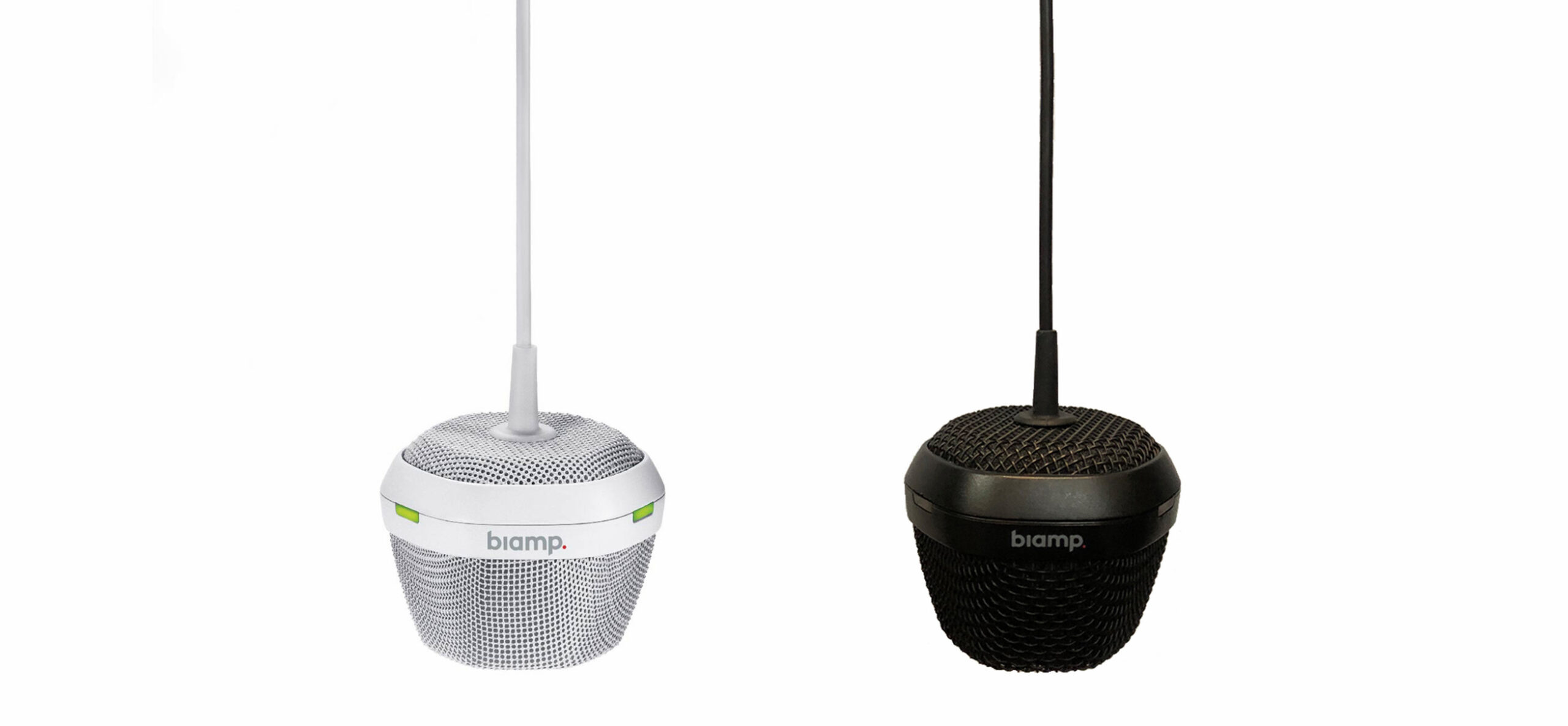
Biamp Microphones
Shure MXA910
The Shure MXA910 represents a more discreet solution for your conference room. This microphone replicates a 2’x2’ ceiling tile and takes the place of a typical drop ceiling fiberboard. Similar to the Parlés Beamtracking, a lobe activates based on voice locations. It uses autofocus technology to create a clean, balanced sound. This hidden solution can be found in TSP’s own conference room, helping us to clearly communicate with our team and clients across the world.
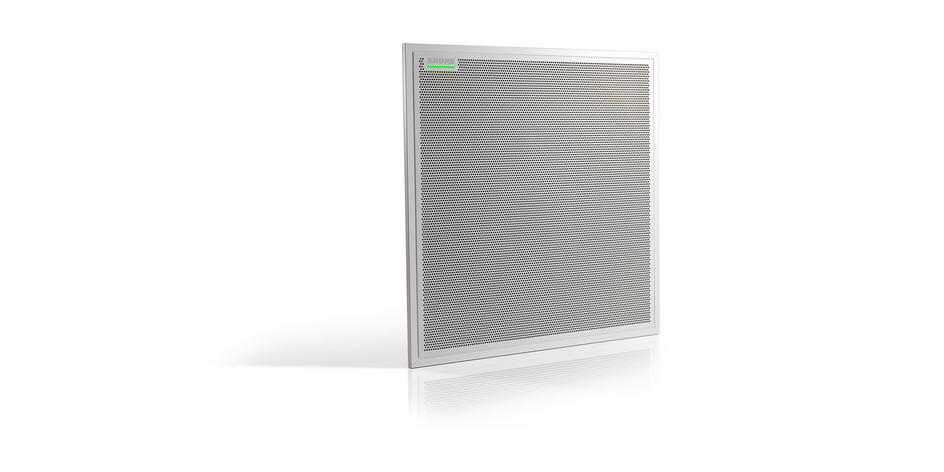
Shure MXA910
Tabletop
While not as discreet as a ceiling microphone, tabletop mics have their own particular advantages and situations where they are a perfect fit. For instance, these include:
- Versatility in location/able to move between multiple rooms
- Ability to mute/unmute directly on the device
- Perfect for smaller conference rooms or when the presenter is the only one speaking
Shure MXA310
Officially certified by Zoom and Microsoft Teams, the Shure MXA310 table array microphone is great for filtering out unwanted background noises, focusing on table-level sound. Built to integrate with Dante or other networked audio devices, the MXA310 is a versatile solution that can be used in conference rooms of all sizes from huddle rooms to large board rooms.
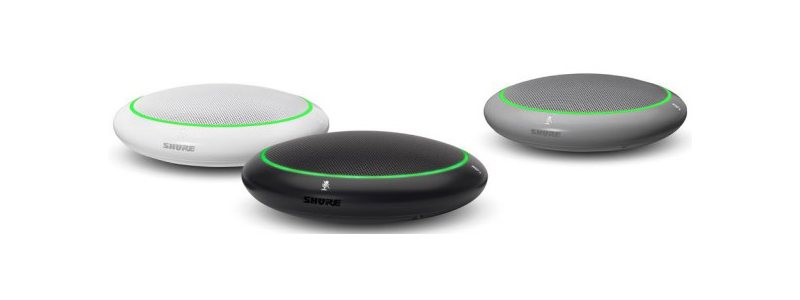
Shure MXA310
Parlé TTM-X Tabletop
Like the Parlé pendant microphone, the TTM-X utilizes Beamtracking technology to pick up every voice in the room evenly and includes its own digital signal processing module. This microphone maintains a low profile on a conference room table, providing as discreet an option as you can find in this style. With full 360° coverage across 4 zones, the Parlé tabletop microphone ensures everyone is heard no matter where they are sitting. It also works to keep an even volume even if the speaker is moving around the room while presenting.
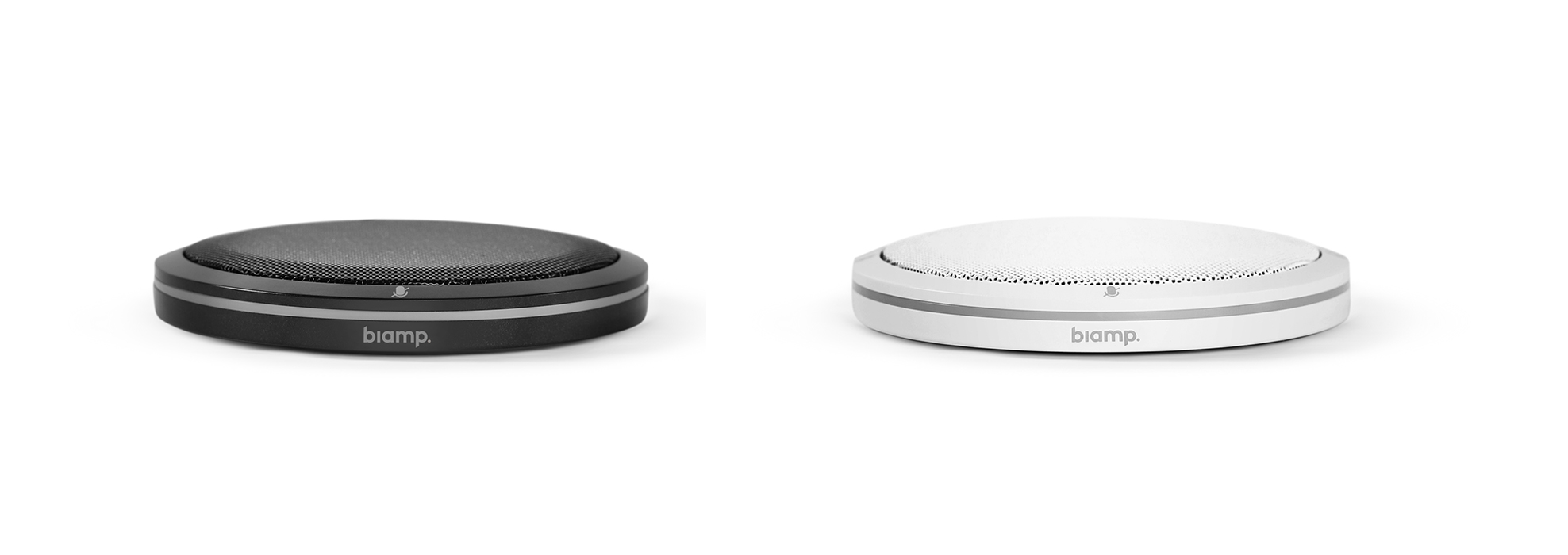
Parle TTM-X
MXA710 – soundbar microphone
For spaces where installing into a ceiling isn’t possible and you want to avoid a tabletop solution, the Shure MXA710 Linear Array microphone is a great solution. The sleek, linear design allows this microphone to be placed virtually anywhere in a meeting space. Whether that’s on a wall or built directly into the conference room table. Made with Shure IntelliMix DSP and Autofocus technology, the MXA710 is a robust solution for any meeting space.
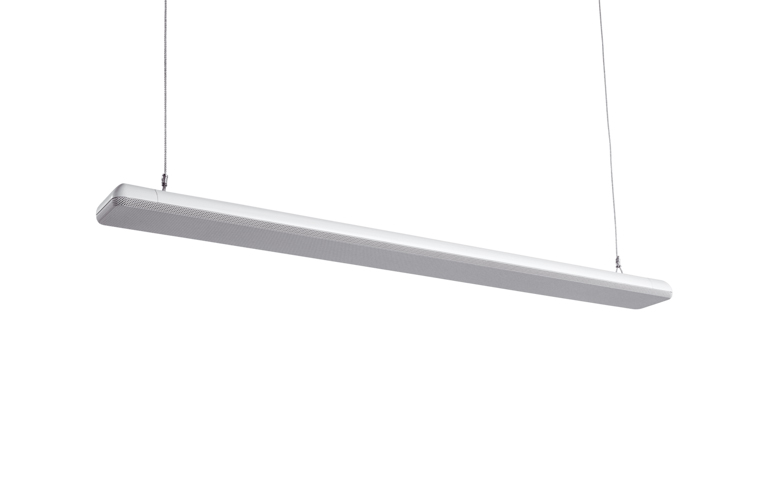
Shure MXA710
Home office
The home office has grown significantly in recent years, and this trend is expected to continue. With many of us working from home in some capacity, the need for crystal clear communication has never been more critical. Many of us have suffered through video meetings, spending inordinate amounts of time ensuring we are heard clearly enough and wasting precious time. While the microphones built into our laptops aren’t terrible, with so much video conferencing happening daily, investing in a microphone for your home office is a smart move.
Yeti microphone
For a simple solution with professional results, we recommend the Yeti microphone from Blue Microphones. The Yeti microphone is used by millions of creators and streamers worldwide and with good reason! Easy to use and install. This plug ‘n play microphone connects via USB and integrates easily with Zoom, RingCentral, and Google Teams. The Yeti microphone features 4 modes, each designed for different scenarios such as conference calls, voiceovers, or in-person interviews.
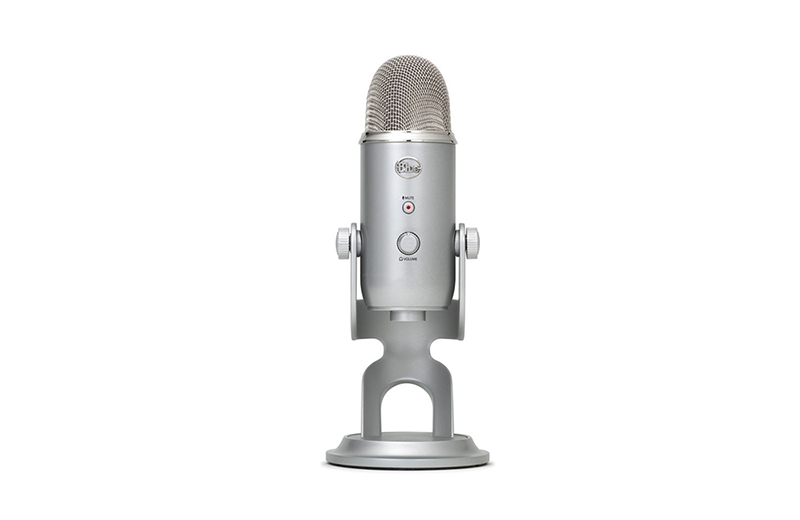
Yeti Microphone
Shure SM7B
For a more professional setup, we recommend the Shure SM7B cardioid studio microphone. The SM7B has been the industry standard for podcasts and musicians for decades. It has been used for everything from Marc Maron’s WTF podcast to Michael Jackson’s Thriller album. While it may seem like overkill for a home office, this microphone is a lifelong investment that can be used for any form of audio you need to capture. By investing in a Shure SM7B, you are ensuring your home office is up to the highest standards in audio. Make sure to invest in the Shure USB to XLR adapter for easy connection to your computer!
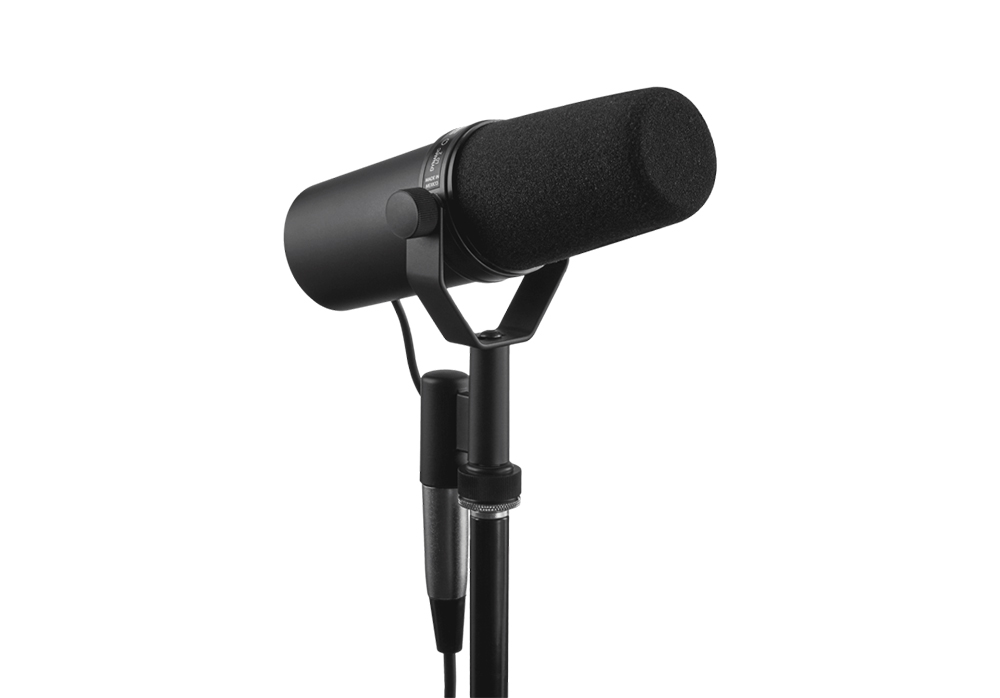
Shure SM7B
The Technology Tie-in
Beamtracking technology works to cover large spaces for mobile speakers
Companies such as Biamp have developed Beamtracking and other technologies. Beamtracking helps microphones focus on us rather than making us focus on them. Biamp’s Beamtracking microphones have one focus: your voice and where you are in the room.
High-quality microphones also feature internal digital signal processing (DSP) to distinguish our voices from remote voices and background noise. Microphones with built-in DSP improve the overall conferencing experience.
Network-based audio is also becoming more prevalent in commercial spaces as well as in our homes. Audio-video bridging (AVB), for example, utilizes the strength and technology of a dedicated Ethernet network. AVB provides strict timing protocols and prioritization of signals to help improve the latency of audio packages being sent to their targets.
Dante – A technician’s dream come true!
While AVB remains on its own isolated network, Dante prioritizes flexibility, and it uses IP addresses in a network to direct uncompressed audio where it needs to go. Dante takes advantage of unicast and multicast traffic in networks using time protocols to create efficient and controlled audio. These methods result in an ecosystem that allows integrators like TSP to manage audio at a network level, with the added benefits of security and service via remote access, saving you time and money.
To complete the ecosystem, PoE (Power over Ethernet) with AVB can be used for speakers as well. Biamp has introduced a PoE amplifier that uses AVB to power multiple speakers and distributes audio using just a CAT cable. With this technology, the days of chasing speaker cable are over — a technician’s dream come true! And the upside for you? A professional like TSP can install and service your conference room AV, so only a single vendor needs to be involved in the process.
Conference room speakers
Audio distribution can be the difference between a great and awful conference room experience. Everything from speaker type and placement to acoustic treatment plays a role in how sound travels around your meeting space. While a soundbar may be a perfect fit for a small huddle room, a pair or more of loudspeakers might be a better fit for a large space for full team meetings.
Use multiple conference room speakers in a large room to evenly distribute sound to all participants. Keep in mind that more speakers doesn’t mean more technology to distract you from what is important. Using more speakers creates a balanced sound over a greater area, resulting in lower total output because all speakers are close to users. With evenly distributed sound, you can avoid having preferred seating in your conference room, ensuring everyone can hear everything no matter their location.
Savant Artison Soundbar
Used in our smallest conference room at TSP headquarters, the Savant Artison features some seriously remarkable engineering with a very impressive look. Perfect for home cinemas and meeting rooms alike, the Artison soundbar includes carbon fiber woofers and midranges, and precision engineering on its customized grilles, ensuring it will last long beyond most other speakers available. An added benefit is its ease of integration with a Savant smart system, an industry standard in automation technology.
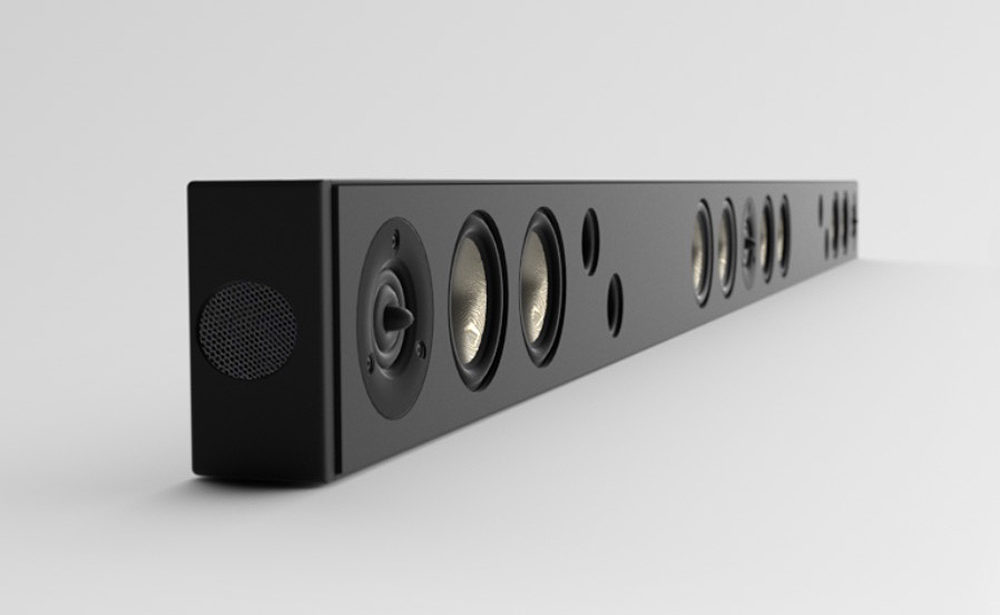
Savant Sound Bar
B&O Beolab speakers
Want a solution that is both luxurious and sounds incredible? Bang & Olufsen’s Beolab speakers are a great way to take your conference room to the next level. Each speaker is delicately tuned by hand and personally built by electrical and mechanical engineers to bring you a perfect product every time. With even distribution across a 180° horizontal arc, a few of these in your conference room guarantees that everyone in each meeting has an incredible meeting experience. With B&O Beolab conference room speakers, you can ensure your meeting is heard the way it was intended to be.
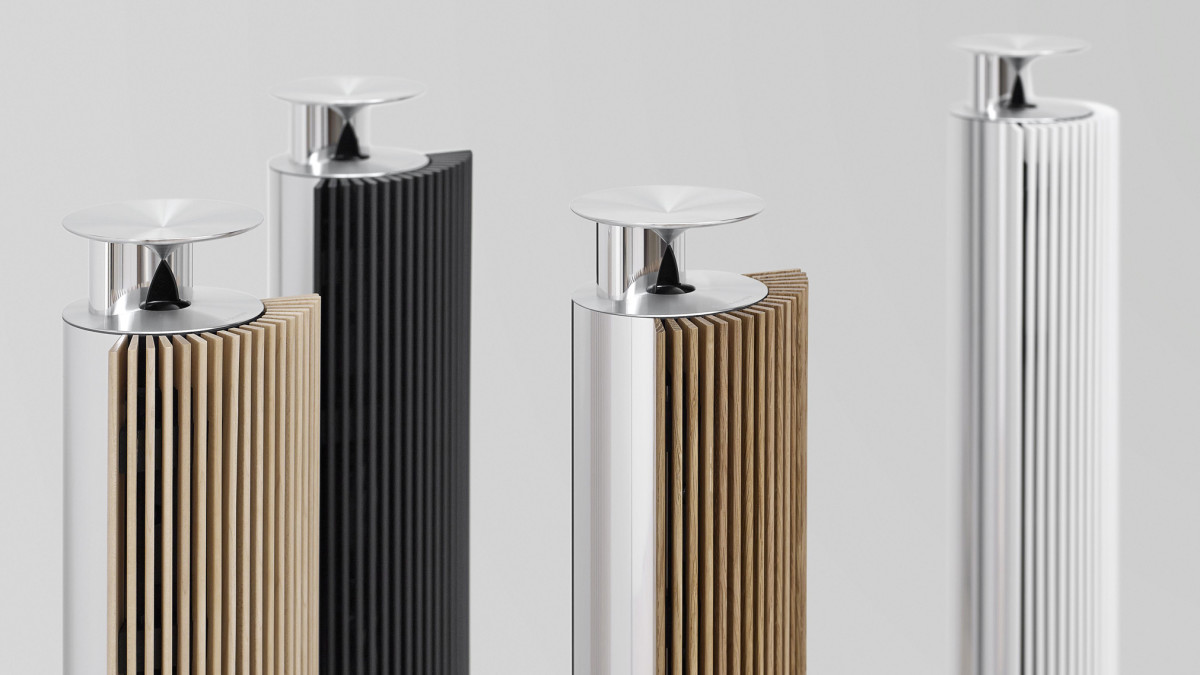
B&O Beolab Speakers
Acoustic treatments
A good microphone and quality speakers are only half of the equation for creating perfect conference room audio. Acoustic treatments are the other half. Without them, sound bounces in every direction, neighboring offices complain about the excessive noise, and sounds from outside the conference room permeate into your space, distracting the entire team during important meetings. Acoustic treatments allow your conference room speakers to sound as intended.
Acoustic solutions fix all of the above problems, but only if carefully designed and installed by an acoustic expert. Anyone can buy a sound diffuser and hang it up on the wall, but only an acoustic expert can measure actual acoustics of a room and analyze the physical properties and qualities of a space to place the right solutions in the right spots.
TSP is fortunate to have acoustic experts on our team, designing and giving input on every conference room AV project. These acoustic experts have a large box of tools to draw from. This is thanks to acoustic treatment solutions from Artnovion, Luxxbox, and more.
Artnovion
Absorbers, diffusers, bass traps, insulation, and more. Artnovion creates a wide variety of acoustic treatments in an even wider variety of styles. By utilizing acoustic treatments from Artnovion, we can reduce the reverberations and echoes within a meeting room. We can also enhance the aesthetic of the room as well. The unique designs of each offer stunning visual effects while also helping your speakers sound the way they were intended to.
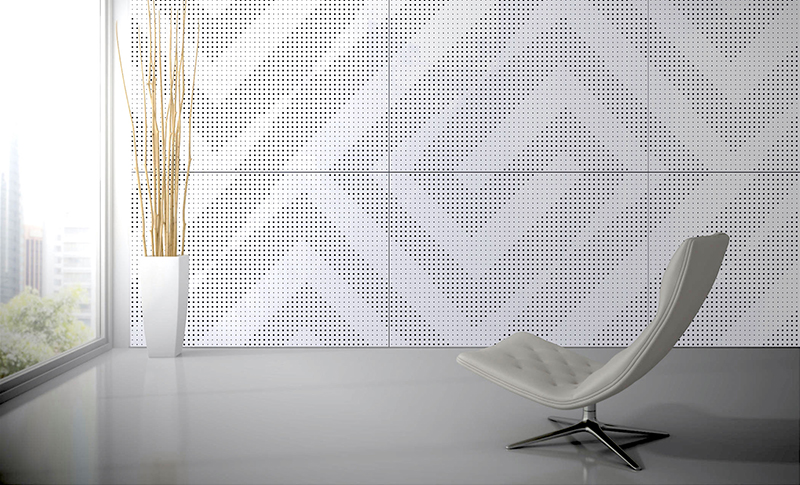
Acoustic treatments from Artnovion
Luxxbox
Luxxbox shows that acoustic solutions go beyond on-wall solutions. Everything from furniture and whiteboards to lighting is built with acoustics in mind. Luxxbox ensures that your conference room chairs, table, and even light fixtures aren’t hampering the acoustic possibilities of your space. With a focus on modern design, Luxxbox solutions serve to enhance the design of your space with every product.
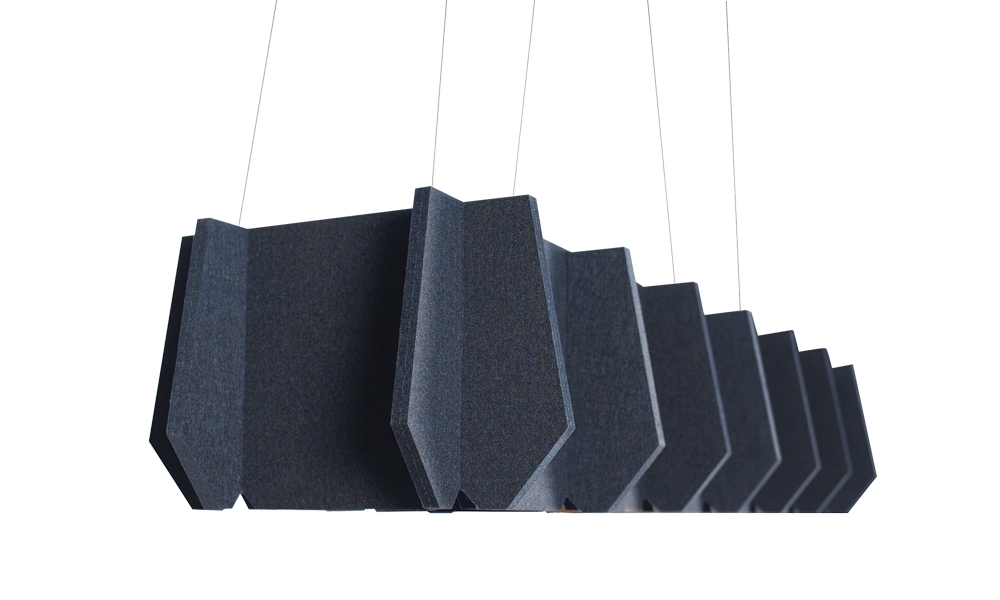
Luxxbox Matrix
The final word
When designing a conference room, TSP Smart Spaces takes the discovery process to the next level. Choosing the right equipment for a conference room to ensure the best possible experience is a priority, but understanding the client is also a fundamental step of the discovery process. Therefore, company culture, industry regulations, and business ethics all play into conference room design as well. In conclusion, technology should not determine how a company conducts itself in the conference room. It should only enhance the experience to allow each participant to focus on the big picture. Contact us today to discuss options for your conference room or home office!
For further reading:
